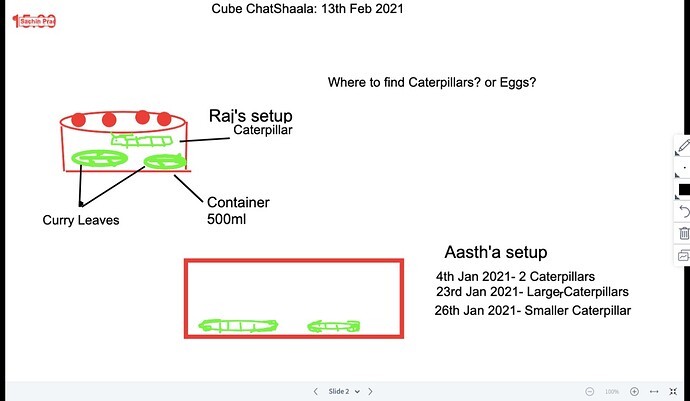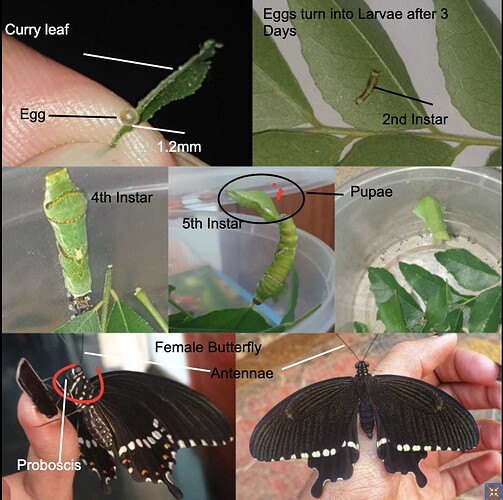Cube ChatShaala 13th Feb 2021
Summary
The talk began with a continuation of the previous days causerie wherein Aastha shared her experience with handling caterpillars. Raj recalled an event where he found Caterpillars in peas which were bought from market, Raj tried to culture the Caterpillars using a setup where he used a 500 ml container and fed curry leaf to the caterpillar on the first day and on other day he tried to give them peas, he observed that the caterpillars did not eat those and were immobile for quite some time soo he discarded the setup. We tried to compare Raj’s Setup with Aastha’s setup. Aastha had a very similar setup where she had a box, 2 caterpillars and she fed them with peas. The question arose what exactly should we look for Eggs or Larvaes to start a Butterfly culture? Where should we look for eggs or larvaes? How do the eggs look? Are they easily visible?
Aastha shared that looking for eggs was easier and could be easily seen under the leaves at the higher branches of the trees.
Thanks to Vishnupriya for a great collage about Butterflys development through every phase!
After a understanding and looking into the pictures present inside the collage, we tried to guess the number of days, it takes for the Egg to larvae and so on to Butterflies.
We transitioned to Earthworms and talked about how to make Tissue Cup Culture using the following procedure:-
• Take the Plastic Cups and make holes from the bottom side using a needle.
• Tear the tissue papers (1 for each cup)[Depends on the size of the cup] and put them to the cup.
• Take a Plate/Tray and place a Tissue/Cloth/Filter Paper on it.
• Add some water over the Filter Paper/Tissue/Cloth.
• Place the Plastic Cups on the Tray/Plate.
• Moisten the Tissue Papers inside the Plastic Cups.
• Use a Brush to pick up the Earthworms, dip them inside the water twice or thrice to remove dirt off them.
• Place the Earthworms into the Tissue Cups.
• Cover the Cups using Muslin Cloth and rubber bands.
We tried to compare Natural environment with Tissue Cup Culture and Vermi pits
What is the difference between Vermi Pit and Vermi Compost? How should we make Vermi Pits?


